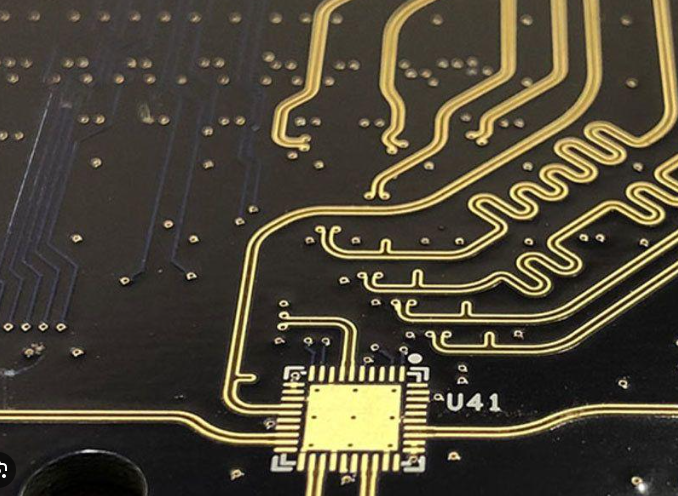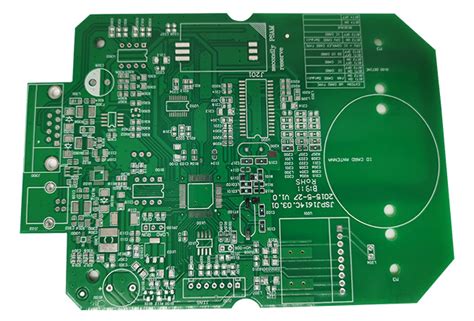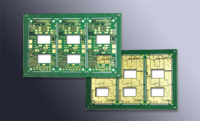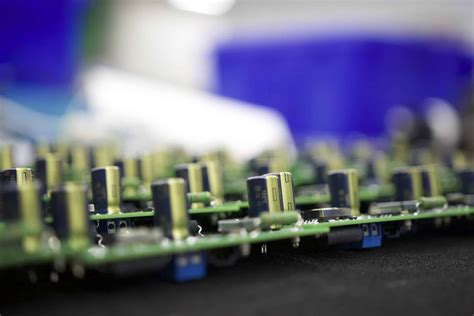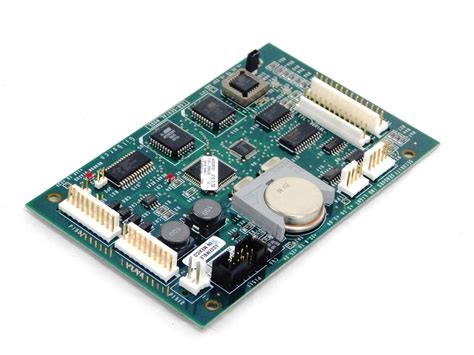Gold plating rogers pcb
Benefits Of Gold Plating In Rogers PCB Manufacturing
Gold plating in Rogers PCB (Printed Circuit Board) manufacturing offers a multitude of benefits that significantly enhance the performance and reliability of electronic devices. As technology continues to advance, the demand for high-performance PCBs has increased, making gold plating an attractive option for manufacturers seeking to improve the quality and longevity of their products.
One of the primary advantages of gold plating is its excellent conductivity.
Gold is a superior conductor of electricity, which ensures efficient signal transmission across the PCB. This is particularly important in high-frequency applications where signal integrity is crucial. By minimizing resistance and signal loss, gold plating helps maintain the integrity of the electrical connections, thereby enhancing the overall performance of the device.
In addition to its conductivity, gold plating provides exceptional corrosion resistance.
Unlike other metals that may oxidize or corrode over time, gold remains stable and resistant to environmental factors such as moisture and air. This characteristic is especially beneficial in harsh environments where PCBs are exposed to extreme conditions. By preventing corrosion, gold plating extends the lifespan of the PCB, reducing the need for frequent replacements and maintenance. Furthermore, the durability of gold plating ensures that the PCB can withstand repeated mechanical stress, such as insertion and removal of connectors, without degrading the quality of the connections.
Another significant benefit of gold plating in Rogers PCB manufacturing is its ability to provide a smooth and uniform surface finish.
This is essential for ensuring reliable soldering and component placement during the assembly process. A smooth surface minimizes the risk of defects such as solder bridging and poor adhesion, which can lead to circuit failures. Moreover, the uniformity of the gold layer contributes to consistent performance across the entire PCB, which is critical for applications that demand high precision and reliability.
Gold plating also offers advantages in terms of thermal performance.
Gold has excellent thermal conductivity, which aids in the efficient dissipation of heat generated by electronic components. This is particularly important in high-power applications where excessive heat can lead to component failure and reduced performance. By facilitating effective heat management, gold plating helps maintain the stability and functionality of the PCB, even under demanding operating conditions.
In addition to these technical benefits, gold plating enhances the aesthetic appeal of PCBs.
The lustrous finish of gold not only signifies quality but also adds a level of sophistication to the final product. This can be particularly advantageous for consumer electronics and other products where visual appeal is a key consideration. The use of gold plating can thus serve as a marketing advantage, setting products apart in a competitive market.
While the initial cost of gold plating may be higher compared to other finishes, the long-term benefits often outweigh the expense.
The increased reliability, durability, and performance of gold-plated PCBs can lead to cost savings over time by reducing the need for repairs and replacements. Additionally, the enhanced performance can result in greater customer satisfaction and brand loyalty, further justifying the investment in gold plating.
In conclusion, gold plating in Rogers PCB manufacturing offers a range of benefits that enhance the performance, reliability, and aesthetic appeal of electronic devices. Its superior conductivity, corrosion resistance, smooth surface finish, thermal performance, and visual appeal make it an ideal choice for high-performance applications. As technology continues to evolve, the advantages of gold plating are likely to become even more pronounced, solidifying its role as a key component in the future of PCB manufacturing.

Gold Plating Techniques For Enhanced Rogers PCB Performance
Gold plating is a critical technique employed in the manufacturing of Rogers PCBs (Printed Circuit Boards) to enhance their performance and reliability. Rogers PCBs are renowned for their superior electrical properties, making them ideal for high-frequency applications. However, to fully leverage these properties, the choice of surface finish is paramount. Gold plating emerges as a preferred option due to its excellent conductivity, corrosion resistance, and ability to provide a smooth surface for soldering.
To begin with, it is essential to understand the rationale behind using gold plating on Rogers PCBs.
Gold, being an excellent conductor, ensures minimal signal loss, which is crucial for maintaining the integrity of high-frequency signals. Moreover, gold’s resistance to oxidation and corrosion significantly extends the lifespan of the PCB, especially in harsh environments. This is particularly important for applications in aerospace, telecommunications, and medical devices, where reliability is non-negotiable.
There are several techniques for applying gold plating to Rogers PCBs, each with its own set of advantages and considerations.
One common method is electroless nickel immersion gold (ENIG) plating. ENIG involves depositing a layer of nickel onto the copper traces, followed by a thin layer of gold. This technique is favored for its ability to provide a uniform and flat surface, which is essential for fine-pitch components and precise soldering. Additionally, ENIG offers excellent protection against oxidation, ensuring long-term performance stability.
Another technique is electroplated gold, which involves the direct application of gold onto the PCB surface through an electrochemical process.
This method allows for thicker gold layers, which can be beneficial for applications requiring enhanced durability and wear resistance. However, it is worth noting that electroplated gold can be more expensive due to the higher gold content, and it may require more complex processing steps.
Transitioning to the considerations for selecting the appropriate gold plating technique, it is crucial to evaluate the specific requirements of the application.
Factors such as cost, environmental conditions, and the need for mechanical robustness should guide the decision-making process. For instance, while ENIG is cost-effective and provides excellent surface planarity, electroplated gold may be more suitable for applications demanding thicker gold layers and increased durability.
Furthermore, it is important to consider the impact of gold plating on the overall manufacturing process.
The choice of plating technique can influence factors such as solderability, thermal performance, and even the compatibility with other materials used in the PCB assembly. Therefore, collaboration with experienced PCB manufacturers and material suppliers is advisable to ensure that the chosen gold plating method aligns with the desired performance outcomes.
In conclusion, gold plating is an indispensable technique for enhancing the performance of Rogers PCBs, particularly in high-frequency and demanding applications. By carefully selecting the appropriate gold plating method, manufacturers can achieve optimal conductivity, corrosion resistance, and surface smoothness, thereby ensuring the reliability and longevity of the final product. As technology continues to advance, the role of gold plating in PCB manufacturing will undoubtedly remain pivotal, driving innovations and improvements in electronic device performance.

Comparing Gold Plating Methods For Rogers PCBs
When it comes to the manufacturing of Rogers PCBs, the choice of gold plating method is a critical decision that can significantly impact the performance and reliability of the final product. Rogers PCBs, known for their high-frequency performance and excellent thermal management, are often used in applications where precision and durability are paramount. Therefore, understanding the nuances of different gold plating methods is essential for engineers and manufacturers aiming to optimize their designs.
One of the most common gold plating methods used in the industry is electroless nickel immersion gold (ENIG).
This method involves a two-step process where a layer of nickel is first deposited onto the copper traces, followed by a thin layer of gold. ENIG is favored for its excellent surface planarity, which is crucial for fine-pitch components and solderability. Moreover, the gold layer in ENIG provides a protective barrier against oxidation, ensuring long-term reliability. However, it is important to note that ENIG can sometimes suffer from a phenomenon known as “black pad,” a type of corrosion that can occur at the nickel-gold interface, potentially leading to solder joint failures.
In contrast, electroplated gold, also known as hard gold plating, offers a different set of advantages.
This method involves the direct application of gold onto the PCB surface through an electrolytic process. Electroplated gold is renowned for its durability and wear resistance, making it ideal for edge connectors and contact points that experience frequent mechanical stress. Additionally, the thickness of the gold layer can be precisely controlled, allowing for customization based on specific application requirements. However, the increased thickness and hardness of electroplated gold can sometimes lead to challenges in achieving optimal solderability, particularly for components with fine pitches.
Another method worth considering is immersion gold plating, which, unlike ENIG, does not involve a nickel layer.
This method is often used for applications where the presence of nickel is undesirable due to its magnetic properties or potential for causing signal integrity issues. Immersion gold provides a uniform and thin gold layer, which is beneficial for maintaining the electrical performance of high-frequency circuits. However, the absence of a nickel layer means that the gold layer is more susceptible to wear and may not provide the same level of mechanical protection as other methods.
As we compare these gold plating methods, it becomes evident that the choice largely depends on the specific requirements of the application.
For instance, if solderability and surface planarity are of utmost importance, ENIG might be the preferred choice. On the other hand, if durability and wear resistance are critical, electroplated gold could be more suitable. Meanwhile, for applications sensitive to magnetic interference or requiring minimal signal loss, immersion gold may be the best option.
In conclusion, selecting the appropriate gold plating method for Rogers PCBs involves a careful consideration of various factors, including mechanical durability, solderability, and electrical performance. By understanding the strengths and limitations of each method, engineers and manufacturers can make informed decisions that enhance the functionality and longevity of their PCBs. As technology continues to advance, ongoing research and development in gold plating techniques will likely yield even more refined solutions, further expanding the possibilities for high-performance Rogers PCBs.

Challenges And Solutions In Gold Plating Rogers PCBs
Gold plating Rogers PCBs presents a unique set of challenges and solutions that are crucial for ensuring optimal performance and reliability in high-frequency applications. Rogers PCBs, known for their superior dielectric properties and low signal loss, are often used in advanced electronic applications such as RF and microwave circuits. However, the process of gold plating these specialized substrates requires careful consideration of several factors to overcome inherent challenges.
One of the primary challenges in gold plating Rogers PCBs is the substrate’s sensitivity to high temperatures.
Rogers materials, while excellent for high-frequency applications, can be susceptible to thermal stress, which can lead to warping or delamination during the plating process. To address this, manufacturers must employ low-temperature plating techniques that minimize thermal exposure. Electroless nickel immersion gold (ENIG) is a popular choice, as it allows for a uniform gold layer to be deposited without the need for high temperatures, thus preserving the integrity of the Rogers substrate.
Another significant challenge is achieving uniform gold thickness across the PCB surface.
Uneven gold distribution can lead to performance inconsistencies, particularly in high-frequency applications where even minor variations can have substantial effects. To mitigate this issue, precise control over the plating process is essential. This involves meticulous monitoring of the plating bath composition, temperature, and time to ensure consistent deposition. Additionally, employing advanced plating equipment with automated controls can enhance the uniformity of the gold layer, thereby improving the overall quality of the PCB.
Furthermore, the adhesion of the gold layer to the Rogers substrate is a critical concern.
Poor adhesion can result in peeling or flaking of the gold layer, compromising the PCB’s performance and reliability. To enhance adhesion, surface preparation is paramount. This typically involves a series of cleaning and micro-etching steps to ensure the substrate is free of contaminants and has a roughened surface to promote better bonding. Moreover, the use of an appropriate underlayer, such as a thin layer of nickel, can serve as a robust foundation for the gold plating, further enhancing adhesion and durability.
In addition to these technical challenges, cost considerations also play a significant role in the gold plating of Rogers PCBs.
Gold is an expensive material, and its use must be optimized to balance performance with cost-effectiveness. One solution is to employ selective gold plating, where gold is applied only to critical areas of the PCB that require enhanced conductivity or corrosion resistance. This targeted approach reduces material costs while still delivering the necessary performance benefits.
Finally, environmental and regulatory considerations must be addressed in the gold plating process.
The use of certain chemicals in traditional plating methods can pose environmental hazards, necessitating the adoption of more sustainable practices. This includes the use of eco-friendly plating solutions and waste management systems that minimize environmental impact while complying with regulatory standards.
In conclusion, while gold plating Rogers PCBs presents several challenges, a combination of advanced techniques and strategic solutions can effectively address these issues. By focusing on temperature control, uniformity, adhesion, cost management, and environmental responsibility, manufacturers can ensure the production of high-quality Rogers PCBs that meet the demanding requirements of modern electronic applications. Through continuous innovation and adherence to best practices, the industry can overcome these challenges and continue to advance the capabilities of Rogers PCBs in high-frequency domains.

